"There’s a cost to any system like this. Today you can drive around the missile fields and see some of these old sites, abandoned sites, you know, people lost property. They lost these homesteads they had grown up on. For some people, they lost a sense of security. Other people gained a sense of security. There are stories to be told in all of these sites. Just because MAD worked, doesn’t mean that we should ignore all of the stuff that went into making it happen..." ~ Historian Gretchen Heefner
-
Minuteman Missile National Historic Site
Article 1: Missileers
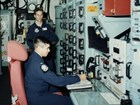
Air Force Officers who served on Missile Combat Crews were commonly known as "Missileers." In the Minuteman Missile fields during the Cold War, their job was to keep constant watch over a flight of ten nuclear missiles, twenty-four hours at a time. Read more
-
Minuteman Missile National Historic Site
Article 2: Female Missileers
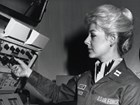
The Air Force restricted its female members to noncombat positions until the late 1970s. Fighting against the policy, Wisconsin Senator William Proxmire pushed for the integration of women on missile crews, stating that it was unlikely that women would be exposed to enemy fire in a position launching missiles. In 1977 reporter Andy Plattner asked, “Should women be assigned as missile launch officers, who potentially would be firing nuclear missiles in the event of war?” Read more
-
Minuteman Missile National Historic Site
Article 3: Missile Maintainers
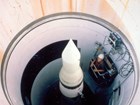
In the Cold War Minuteman Missile Fields, missile maintainers conducted all manner of inspections, routine upgrades, equipment replacement, or necessary repairs. Read more
-
Minuteman Missile National Historic Site
Article 4: Flight Security Controller

Flight security controllers were non-commissioned officers with the rank of Sergeant, Staff Sergeant, or Technical Sergeant. They were the top ranking security police personnel at each Minuteman Missile launch control facility. One security controller was posted in the security control room at all times to monitor security at the control facility, as well as all ten missile silos in their flight area. Read more
-
Minuteman Missile National Historic Site
Article 5: Security Alert Teams
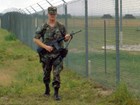
Security alert teams, under the supervision of the flight security controllers, were responsible for periodic site inspections and responding to any security breaches that occurred in the Cold War Minuteman Missile fields. It was their duty to secure a Launch Facility, for example, following an alarm or security breach and remain at the Launch Facility until the site was secure and alarmed. Read more
-
Minuteman Missile National Historic Site
Article 6: Missile Rations Cook
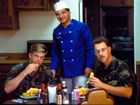
In the Cold War Minuteman Missile fileds, a cook was scheduled for each three-day alert tour at a Launch Control Facility (LCF). Missile rations cooks typically held ranks from Airman First Class up to Staff Sergeant and were typically in their twenties. Read more
-
Minuteman Missile National Historic Site
Article 7: Facility Manager
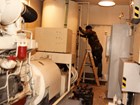
In the Cold War Minuteman Missile fields, a facility manager's primary job duties included supervising and managing topside personnel at the Launch Control Facility, maintaining support equipment, and responding to emergencies under the direction of the missile crew on duty. There were also a host of additional duties, including everything from acting weatherman, mechanic, innkeeper, and groundskeeper, or essentially, anything needed to keep the facility running smoothly. Read more
-
Minuteman Missile National Historic Site
Article 8: Minuteman Missile Area Landowners Association
To ensure that the government took landowners’ rights into consideration during site selection and fairly compensated landowners, a group of farmers and ranchers formed the Minuteman Missile Area Landowners Association (MALA) in the early 1960s. MALA disseminated information to area landowners, believing that working collectively would aid the defense effort while safeguarding their private interests. Read more
-
Minuteman Missile National Historic Site
Article 9: Anti-nuclear Activists and Protest Actions
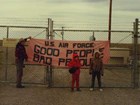
Acts of resistance against America’s nuclear defense program began in the late 1950s and included both solitary protests and organized groups. Individual protests tended to be carried out by local residents, while the early group actions were typically organized by national groups. By the 1980s, wide-spread locally-based activism occurred throughout the missile fields. Read more
